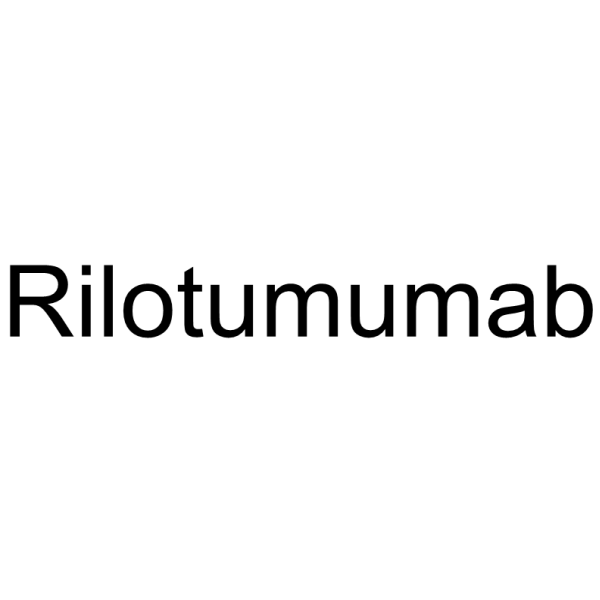872514-65-3
| Name | Rilotumumab |
|---|
| Description | Rilotumumab (AMG 102) is an anti-HGF (anti-hepatocyte growth factor) monoclonal antibody, inhibits HGF/MET-driven signaling. Rilotumumab shows anti-tumor activity, and can be used in castration-resistant prostate cancer (CRPC) and solid tumor research[1][2]. |
|---|---|
| Related Catalog | |
| In Vitro | Rilotumumab (10 μg/mL; overnight) shows the decrease of MET phosphorylation at Y1234 and Y1235, and an increase in total MET[2]. Western Blot Analysis[2] Cell Line: U87MG.vIII cells Concentration: 10 μg/mL Incubation Time: Overnight Result: Showed MET phosphorylation at tyrosine residue 1234 (Y1234) and Y1235 ~50% lower in U87MG.vIII cells than in untreated cells. Showed an increase in total MET compared with untreated cells. |
| In Vivo | Rilotumumab (intraperitoneal injection; 1.5 mg/kg; once two days; 11 d) treatment inhibits glioma cell growth in vivo[2]. Animal Model: 6-8-week-old BALB/c nu/nu female mice subcutaneous injected with U87MG.vIII cells[2] Dosage: 1.5 mg/kg Administration: Intraperitoneal injection; 1.5 mg/kg; once two days; 11 days Result: Reduced U87MG.vIII xenograft growth (P=0.0002) compared with vehicle-treated xenografts (P=0.0001). |
| References |
| No Any Chemical & Physical Properties |
